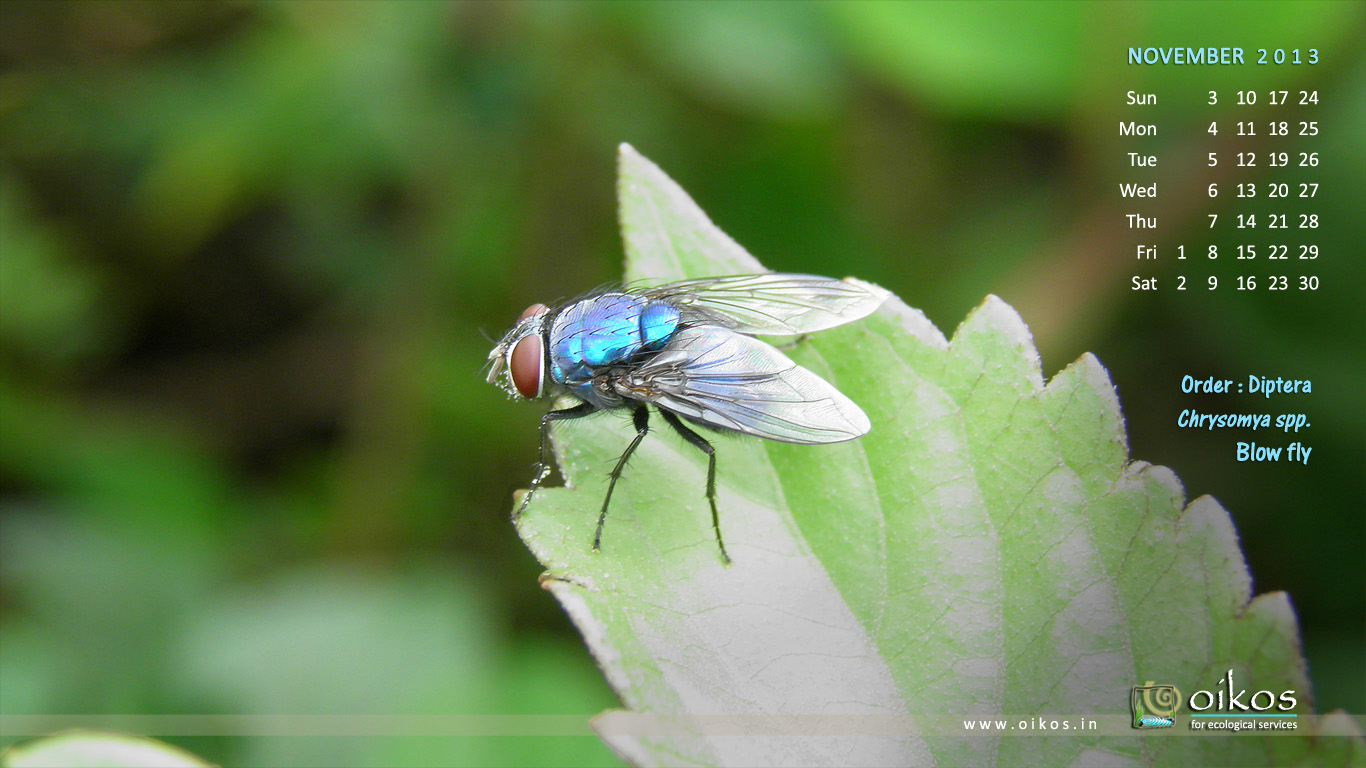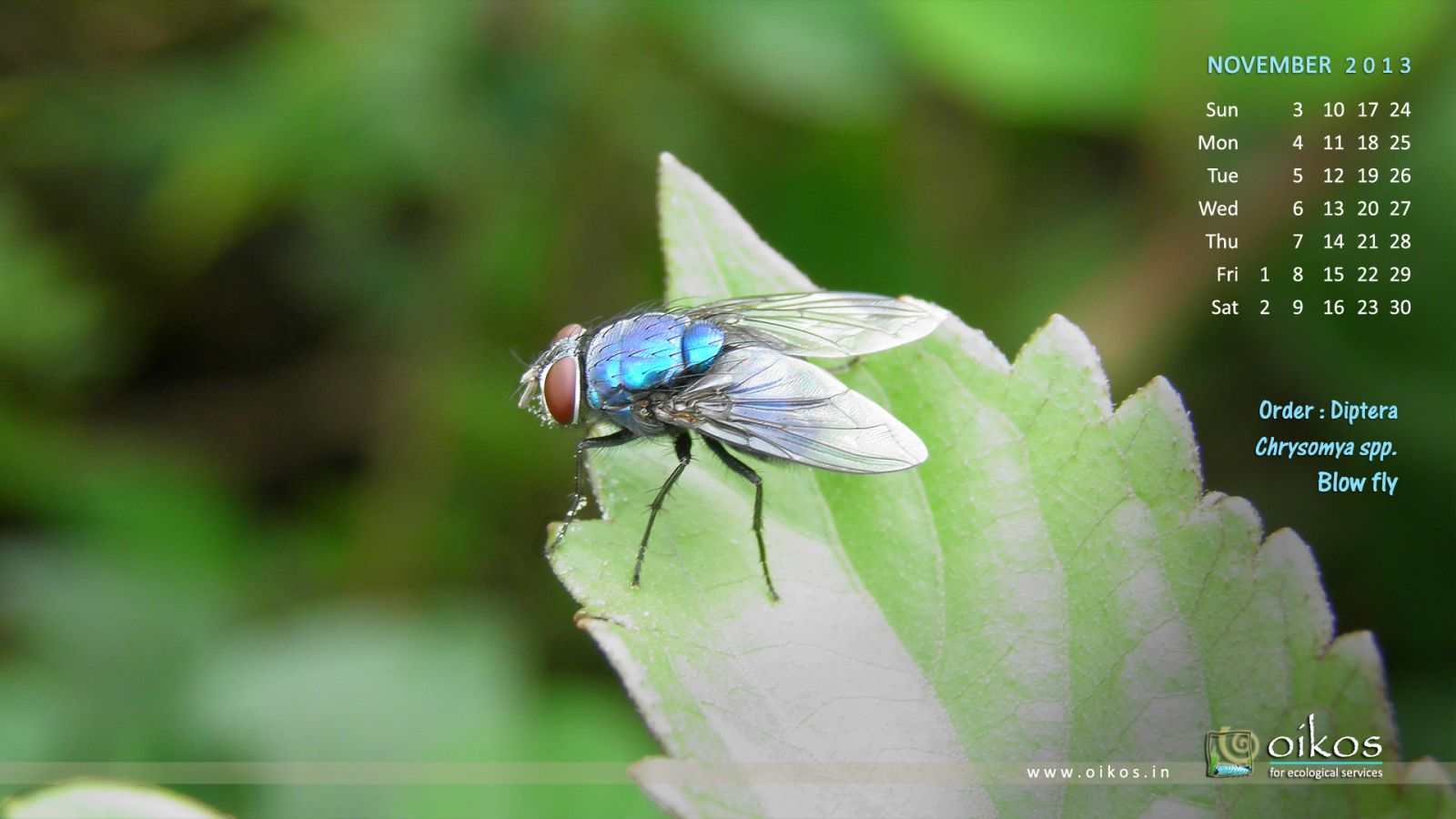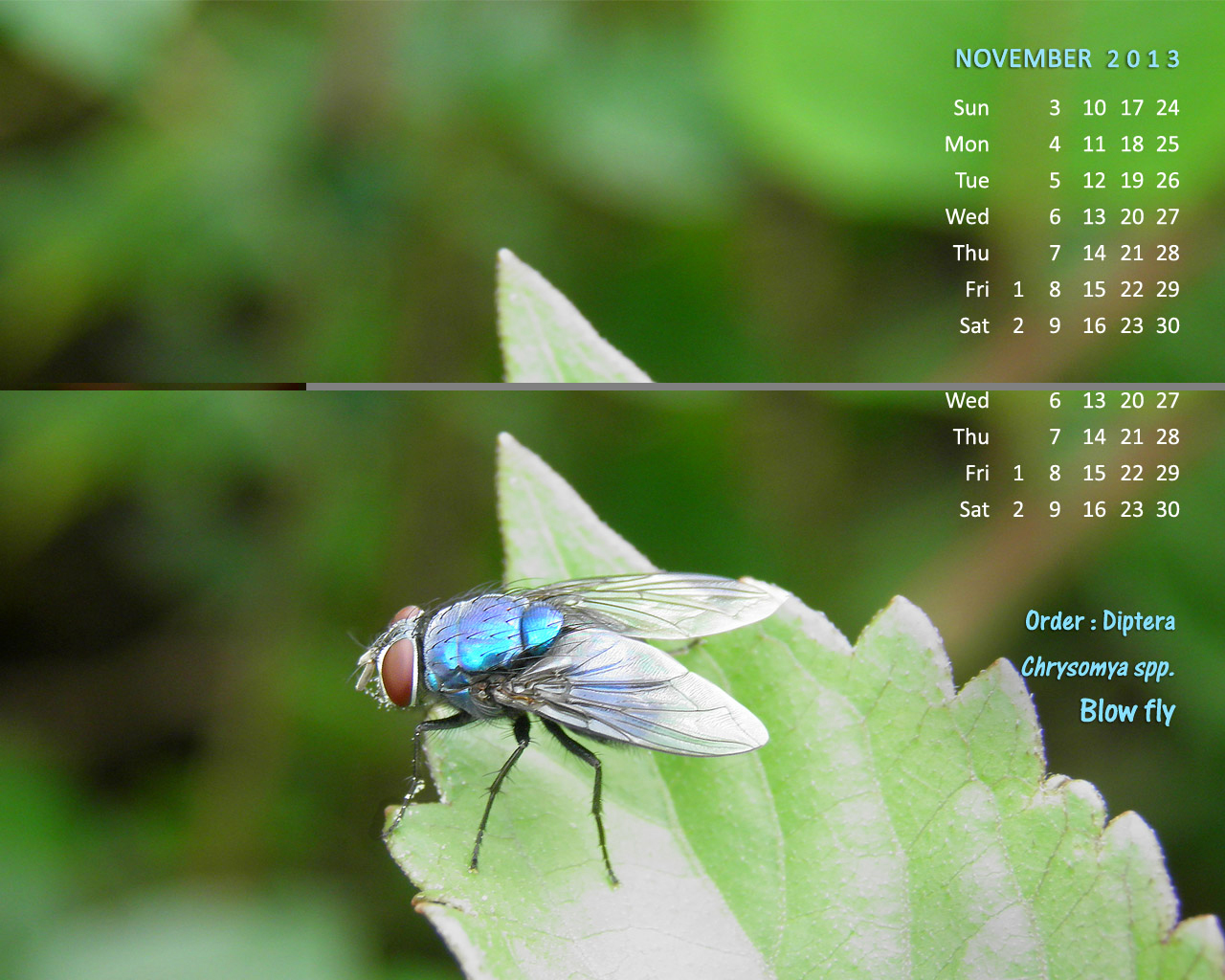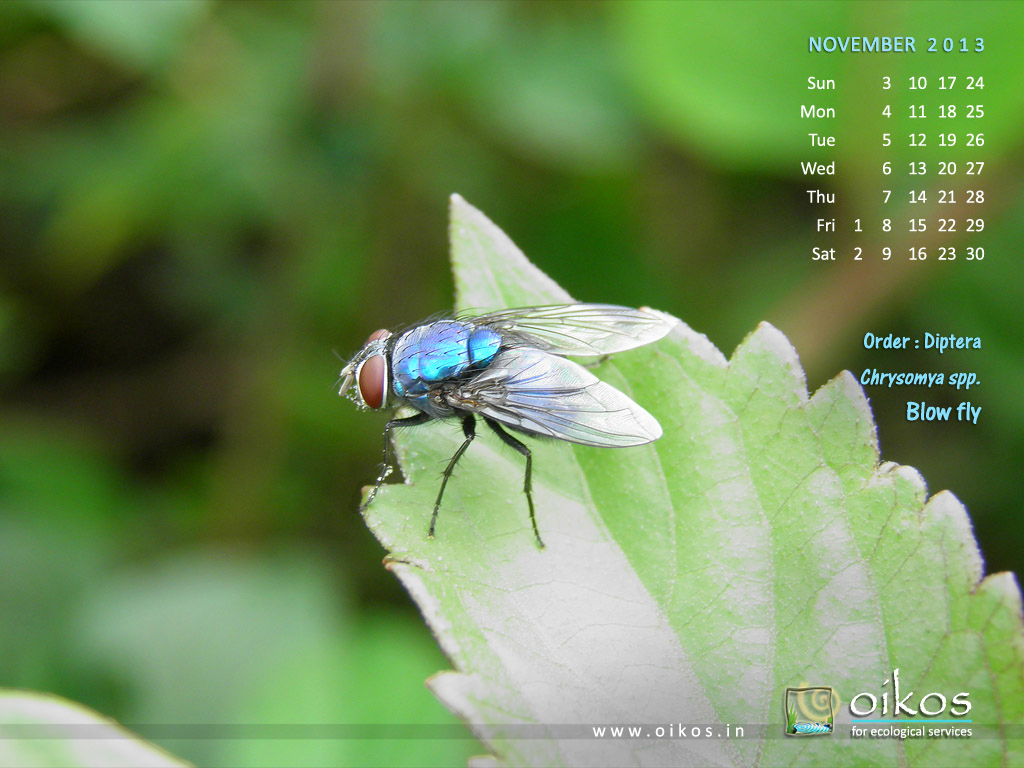Nov - 2013
| November - 2013 | |
|
Dear Nature Lovers,
Greetings from oikos ! Another familiar type of insect to humans is ‘mosquitoes and house flies’. These are categorized as ‘diptera’. One of the attractive amongst them is “Blow Fly”. Blow flies are shiny-metallic blue or green in colour. These are house-fly sized or larger usually found near flowers.
|
|
| Regards, Ketaki & Manasi. |
|
|
Blow Fly
ORDER : Diptera Dipterans have colonized most human habitats; some have also conquered habitats that seem extreme to most other higher organisms. Only the Arctic and the Antarctic can be described as regions that are dipteran-free. Wings : The adults have one pair of normal wings. The hindwings are modified into club-like structures called ‘halteres’. Mouth Parts : They have piercing and sucking or sponging mouthparts. Metamorphosis : Egg – Larva (aquatic/terrestrial) – Adult (terrestrial). Terrestrial larvae found in dead, decaying material; also called maggots. Significance to Humans : Larvae are scavengers and decomposers. Thus they play an important role in decomposing dead animals and carrion. The presence of adults as well as maggots of diptera on carrion and corpses provides a valuable tool in assessing time of death to crime investigators. Maggots prove menace to domestic dogs. Flies that visit flowers are also important pollinators. |
|
|
Blow Fly – Chrysomya sp.
These belong to the family Calliphoridae. Some common names for blow flies include bluebottle, greenbottle, black blow flies or carrion flies. The Blow flies are shiny with metallic blue or green colour. They are medium in size (6mm-14mm), like the house flies or a little larger. They have one pair of wings and the hindwings are modified into structures called as ‘halteres’. To fly, the eyes transmit information to the brain, which in turn transmits it to the halters. The halteres possess sensitive nerve-endings called sensillae, which keep passing information throughout the flight. The halteres, therefore, act as gyroscopes (device maintaining or measuring orientation), constantly adjusting flight patterns. These flies are found near flowers and thus are important pollinators. |
Click on any of the desired options below to get appropriate image.
Save it to computer and set it as desktop background for your computer monitor.
Oikos for ecological services
Ph. 020-25451875
Web: www.oikos.in





